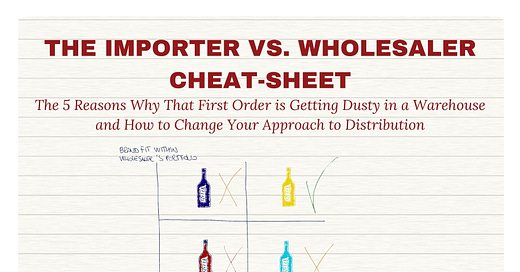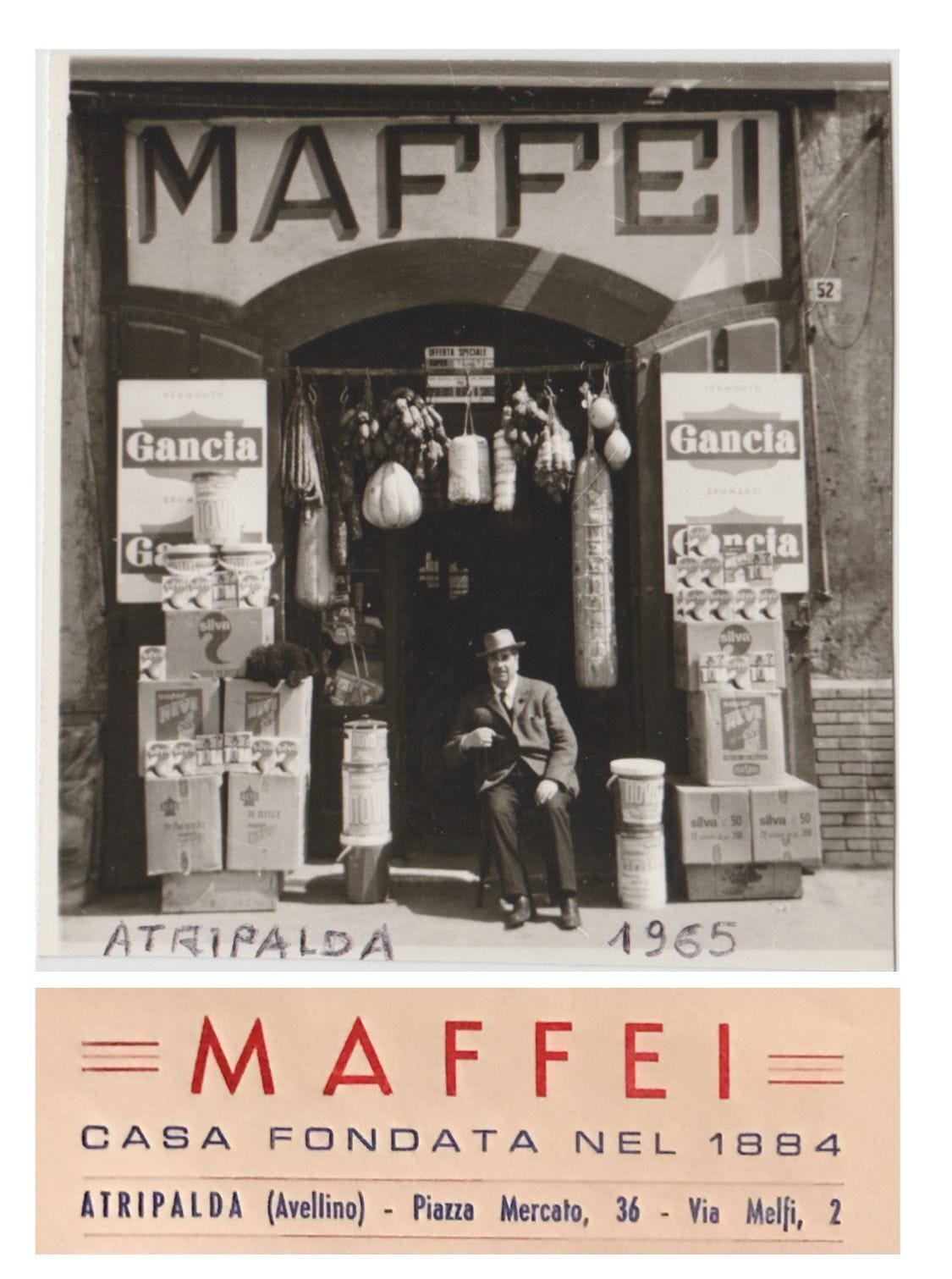The "Importer vs. Wholesaler" Cheat-Sheet
The 5 Reasons Why That First Order is Getting Dusty in a Warehouse and How to Change Your Approach to Distribution.
Dear Bottom-up Drinks Builder,
In today’s issue, I’ll analyze new drink brands' most common issues with sales and distribution and show you my five-step process for ensuring a great relationship with your distribution partners.
Adopting this process will ensure you have solid basics before scaling up your brand. Unfortunately, most brand owners treat all distributors the same.
When exporting their brand, they fail to acknowledge the difference between an importer and a wholesaler. They are the Ying and Yang of distribution; you need both:
An importer is an entity that represents your brand in a market. It works at a national level across channels. Although they may have a sales force, it’s spread nationwide and lacks a deep dive to the last mile. Their Sales Force is usually relatively small, focusing only on 1 or 2 people in the main cities.
A wholesaler is regional (city or across a few provinces). It has a sizeable sales force in a small territory, targeting specific customers and channels. A wholesaler can impact the sell-out but doesn’t give you a national presence.
Brand owners don't realize that importers and wholesalers are two sides of the same coin to scale
This is a short personal story. My great-grandfather and grandfather were wholesalers in southern Italy for 100 years. The business survived two World Wars but closed when I was a child in the 1980s. All I have now is a photo in my wallet and a passion for the industry. I've spent years understanding the role of wholesalers in building brands and how to ensure brands can last longer than just a couple of generations.
I’ve worked in 30+ markets on four continents, bringing brands to market only via third-party distributors. I soon realized the crucial importance of small/medium local wholesalers. A brand will never succeed without the granularity of wholesalers' business.
RTM nuances vary between markets, but the dynamics are similar. I will discuss the most common traits that work globally, so bear with me if they don’t apply 100% to your market. They apply 70-80%, and that’s good enough. What are the most common challenges?
Challenge 1: Most importers have quite a small direct sales force. When you launch in a market, you look for an importer; you don’t go deeper to understand the best wholesalers. Wrong.
They usually have a small sales force across the country. Every brand knows the theory of a city-based commercial approach, but only those who know how to work with wholesalers can win in a city. Some will tell you they sell directly and don’t need wholesalers. BS. Their sales force will be too small to make an impact.
Challenge 2: Wholesalers ship your cases. Nobody talks about them, but they go the last mile in the trade.
Importers rarely introduce you to them as they wanna (understandably) own that relationship. You win if you manage to be relevant to wholesalers and importers. Otherwise, you’ll be relevant only to one link of the distribution chain.
Bars think bottom-up. They work with 2-3 wholesalers that bring them the goods. If a brand is unavailable, they'll order another one their wholesalers have.
They don't want to have tens of invoices from different players. Even if an importer has direct distribution to the same accounts, bars are very likely to order through wholesalers out of convenience. You're missing out if you don't have their management and sales teams on board.







